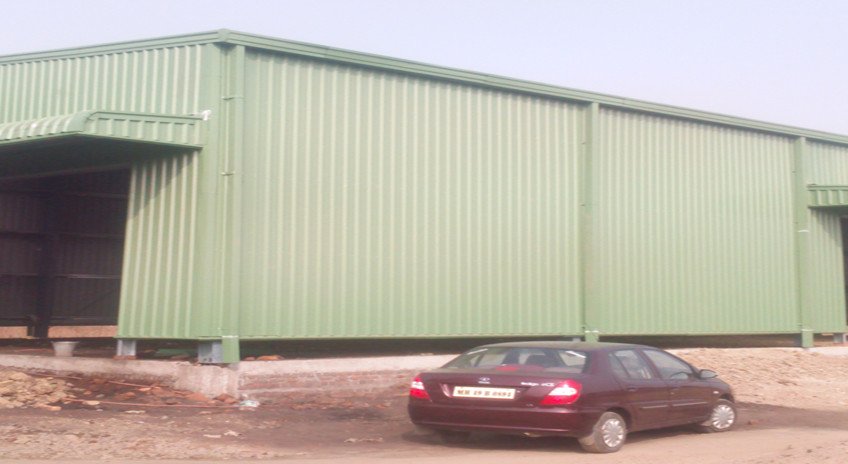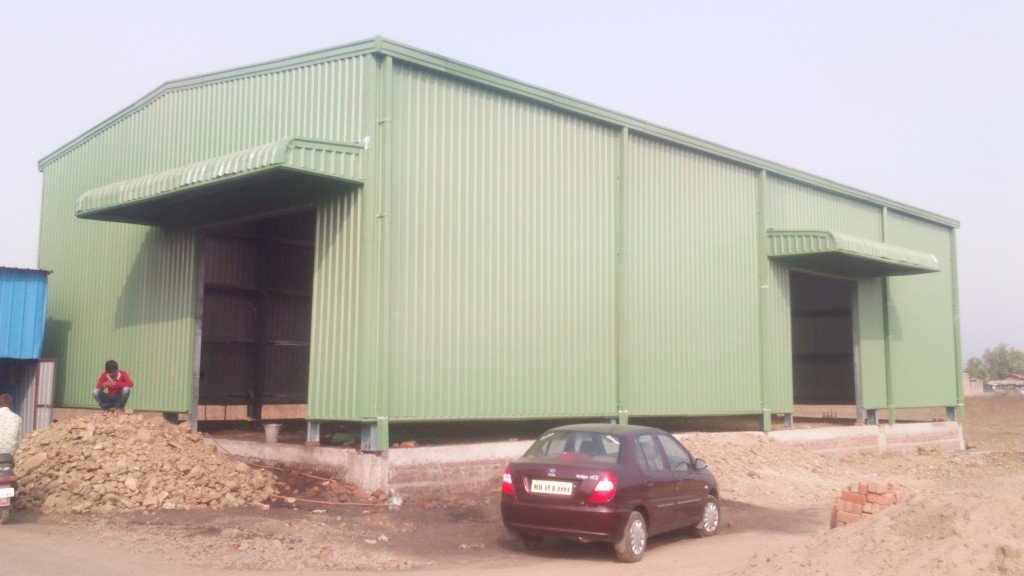Industrial construction has seen a paradigm shift over the years, with Pre-Engineered Buildings (PEBs) emerging as a modern alternative to traditional structures. Whether you’re planning a warehouse, factory, or storage unit, choosing the right construction method is crucial. In this blog, we’ll compare PEB industrial sheds and traditional structures to help you make an informed decision for your next project.
What Are PEB Industrial Sheds?
Pre-engineered building (PEB) industrial sheds are prefabricated steel structures manufactured off-site in a factory and assembled at the construction site. They are designed to meet specific project requirements using advanced technology and modern engineering practices.
In contrast, traditional structures involve on-site construction using conventional materials like concrete, bricks, and wood, with designs typically developed independently for each project.
Key Differences Between PEB Industrial Sheds and Traditional Structures
| Aspect | PEB Industrial Sheds | Traditional Structures |
| Construction Speed | Faster due to prefabrication | Slower due to on-site processes |
| Cost | Cost-effective with optimized materials | Higher costs due to labor and wastage |
| Material Usage | Steel, lightweight and recyclable | Bricks, concrete, and wood, prone to wastage |
| Design Flexibility | High, with customizable layouts | Limited flexibility |
| Durability | High, resistant to weather and seismic forces | Depends on materials used |
| Sustainability | Eco-friendly and recyclable | Generates more waste |
Advantages of PEB Industrial Sheds
- Time Efficiency
PEBs are manufactured in a factory while the site is prepared, allowing simultaneous processes. This reduces construction time by up to 50% compared to traditional methods.
- Cost Savings
PEBs save costs in several ways:
- Material Optimization: Steel components are precisely engineered, minimizing waste.
- Labor Costs: Prefabricated components require less on-site labor, reducing expenses.
- Maintenance: Steel sheds are highly durable, requiring minimal maintenance over time.
- Customizable Design
PEB sheds are highly adaptable, offering customization in dimensions, layouts, and aesthetics. Whether you need an open-plan warehouse or a partitioned factory floor, PEBs can be tailored to your requirements.
- Durability and Strength
Made from high-grade steel, PEB sheds are resistant to extreme weather conditions, corrosion, and seismic forces. This ensures the longevity of your investment.
- Environmentally Friendly
The use of recyclable steel and minimal construction waste makes PEB sheds a sustainable choice, contributing to a greener future.
Limitations of PEB Industrial Sheds
While PEB sheds offer numerous benefits, they may have certain limitations:
- Initial Costs for Customization: Unique designs or advanced features may slightly increase upfront costs.
- Transportation Challenges: Prefabricated components require efficient logistics for delivery.
These challenges can be mitigated by partnering with an experienced PEB provider who ensures smooth execution.
Advantages of Traditional Structures
- Familiarity
Traditional structures are well-understood and widely used, making it easier to find local contractors and resources.
- Material Availability
Bricks, concrete, and wood are readily available in most regions, reducing dependency on specialized suppliers.
- Aesthetic Versatility
Traditional materials allow for certain architectural designs, like ornate facades or intricate detailing, which may be challenging with PEBs.
Limitations of Traditional Structures
- Longer Construction Time
The on-site nature of traditional construction often leads to delays caused by weather, material shortages, or labor issues.
- Higher Costs
Traditional construction typically involves higher labor costs, material wastage, and ongoing maintenance expenses.
- Environmental Impact
Concrete and bricks generate significant carbon emissions, and construction waste can contribute to environmental degradation.
- Limited Flexibility
Traditional structures are less adaptable to future modifications or expansions compared to PEB sheds.
When to Choose PEB Industrial Sheds
PEB industrial sheds are ideal for:
- Warehouses: Offering large, open spaces for storage and logistics.
- Manufacturing Units: Customizable layouts for machinery and production lines.
- Cold Storage: Insulated panels for temperature-controlled environments.
- Aircraft Hangars: Large spans without internal columns.
If speed, cost-efficiency, and scalability are priorities, PEBs are the clear choice.
When to Choose Traditional Structures
Traditional structures might be a better fit for:
- Residential Buildings: Where aesthetic appeal is a primary concern.
- Historical Projects: Where traditional materials and methods are required.
- Small-Scale Projects: With limited budgets or specific design preferences.
PEB Industrial Sheds vs. Traditional Structures: A Cost Analysis
| Expense Type | PEB Industrial Sheds | Traditional Structures |
| Material Costs | Lower due to optimization | Higher due to wastage |
| Labor Costs | Reduced with prefabrication | High due to longer construction times |
| Maintenance | Minimal, as steel is durable | Frequent repairs and upkeep |
| Energy Efficiency | High with insulated panels | Moderate, depending on design |
Future Trends in PEB Industrial Sheds
As technology advances, PEB sheds are incorporating innovative features:
- Smart Buildings: IoT integration for automation and monitoring.
- Sustainable Materials: Use of green steel and energy-efficient designs.
- Modular Expansions: Easy scalability to accommodate business growth.
These trends further cement the position of PEB sheds as the future of industrial construction.
Conclusion
When it comes to modern industrial construction, PEB industrial sheds outshine traditional structures in terms of speed, cost, durability, and sustainability. They are a versatile and reliable solution for businesses looking to build efficiently without compromising on quality.
For top-notch PEB industrial shed solutions, trust the expertise of UN Multitech. With a proven track record of delivering innovative and customized construction services, they are your go-to partner for all industrial building needs. Visit their website today to explore how they can bring your vision to life!








